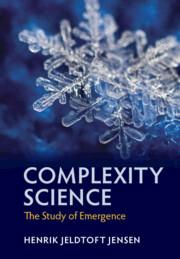Question
We consider two different scenarios for a particle moving in R . 1. Symmetrical but not homogeneous: From time t to t + , the
We consider two different scenarios for a particle moving in R.
1. Symmetrical but not homogeneous: From timet to t+ , the particle moves from x to the right with probability R(x) and to the left with probability L(x) = R(x) and does not move with probability N(x) = 1-R(x)-L(x).
2. Homogeneous but not symmetrical: From time t to t+, the particle moves to the right with probability R and to the left with probability L = 1-R= R.
For each scenario, give and justify the equation for u(t+,x), and then take the parabolic limit. What are the resulting equations? (non-symmetrical case, you need to make an assumption for this to work. What is it?)
Step by Step Solution
There are 3 Steps involved in it
Step: 1

Get Instant Access to Expert-Tailored Solutions
See step-by-step solutions with expert insights and AI powered tools for academic success
Step: 2

Step: 3

Ace Your Homework with AI
Get the answers you need in no time with our AI-driven, step-by-step assistance
Get StartedRecommended Textbook for
Complexity Science The Study Of Emergence
Authors: Henrik Jeldtoft Jensen
1st Edition
1108834760, 9781108834766
Students also viewed these Mathematics questions
Question
Answered: 1 week ago
Question
Answered: 1 week ago
Question
Answered: 1 week ago
Question
Answered: 1 week ago
Question
Answered: 1 week ago
Question
Answered: 1 week ago
Question
Answered: 1 week ago
Question
Answered: 1 week ago
Question
Answered: 1 week ago
Question
Answered: 1 week ago
Question
Answered: 1 week ago
Question
Answered: 1 week ago
Question
Answered: 1 week ago
Question
Answered: 1 week ago
Question
Answered: 1 week ago
Question
Answered: 1 week ago
Question
Answered: 1 week ago
Question
Answered: 1 week ago
Question
Answered: 1 week ago
Question
Answered: 1 week ago
Question
Answered: 1 week ago
Question
Answered: 1 week ago
Question
Answered: 1 week ago
View Answer in SolutionInn App



